Ciabatta vs. Focaccia Bread: Which One Is Right for Your Recipe?
Ciabatta and Focaccia are two of the most popular Italian breads. Both come from Italy but have different textures, flavors, and uses. Ciabatta is a crusty bread with a chewy texture, while Focaccia is soft, fluffy, and rich in olive oil.
These breads work well in different recipes. Ciabatta is known of being perfect for sandwiches and dipping, while Focaccia glows as a side dish or a flavorful sandwich base. If you love artisan bread, understanding their differences will help you choose the right one.
Here, we’ll compare Ciabatta vs. Focaccia bread. You’ll learn about their texture, ingredients, and best uses. This guide will help you pick the best option for your meal.
Ciabatta: A Closer Look at This Classic Italian Bread
The Origins of Ciabatta
Ciabatta was created in the 1980s in Italy as a response to French baguettes. Bakers wanted a chewy bread that worked well for sandwiches. TIt ended up to become a staple in Italian cuisine and loved worldwide.
Traditional Ciabatta Ingredients
Ciabatta as an Authentic Italian bread uses only few ingredients: Flour, water, yeast, and salt which allow it to create its airy texture. It has, unlike Ciabatta, a drier dough, making it light and crisp when baked.
Key Characteristics of Ciabatta
This artisan bread has a crisp crust and a chewy, open crumb. The high hydration level creates large air pockets, giving it a soft inside with a crusty outside. In a bread texture comparison, Ciabatta falls between crusty bread and soft bread.
Common Uses for Ciabatta
Ciabatta is perfect for sandwiches because it holds fillings well. It also works great for bread dipping with olive oil or balsamic vinegar. Many people toast it for a crunchy bite, making it a favorite for bruschetta and garlic bread.
Ciabatta vs. Focaccia bread offers two different experiences. If you prefer a chewy texture and a crispy crust, Ciabatta is a great choice.
What Is Focaccia? A Guide to Italy’s Flavorful Flatbread
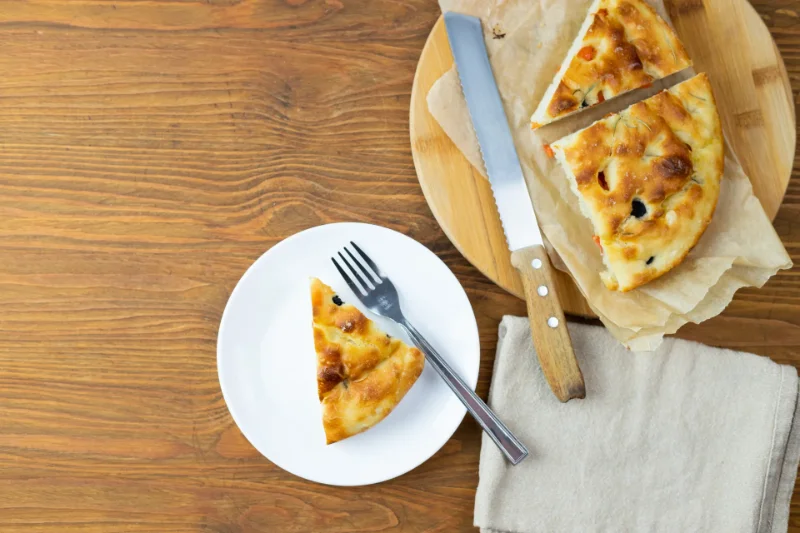
The Origins of Focaccia and Its Regional Variations
Focaccia is one of the oldest traditional Italian breads. It dates back to ancient Rome and has many regional variations. Ligurian Focaccia is thin and crisp, while other versions are thicker and softer. Each region adds its own touch, from herbs to cheese. From north to southern Italy you can enjoy different taste of focaccia depending on the region you are in.
Basic Ingredients of Focaccia
This authentic Italian bread uses simple ingredients. Flour, water, yeast, and salt form the base. Olive oil gives it a rich flavor, while herbs like rosemary or garlic add extra taste. Oil makes this bread stands out compared to Ciabatta which is baed on dough made using water only.
Focaccia’s Unique Texture and Flavor
This bread stands out in any bread texture comparison. It is soft, airy, and full of flavor. The olive oil allows it to marry crispiness on the outside and fluffiness in the inside. Comparing Ciabatta vs. Focaccia bread, it is safe to say that Focaccia leans more toward being a chewy bread.
Popular Uses for Focaccia
Focaccia is perfect for bread dipping with olive oil or balsamic vinegar. It also works well as a sandwich base, holding fillings without falling apart. Many people serve it as a side dish with soups, salads, or pasta.
When choosing between Ciabatta vs. Focaccia bread, Focaccia is the best option if you love soft, flavorful, and olive oil-rich bread.
Ciabatta vs. Focaccia: Key Differences You Should Know
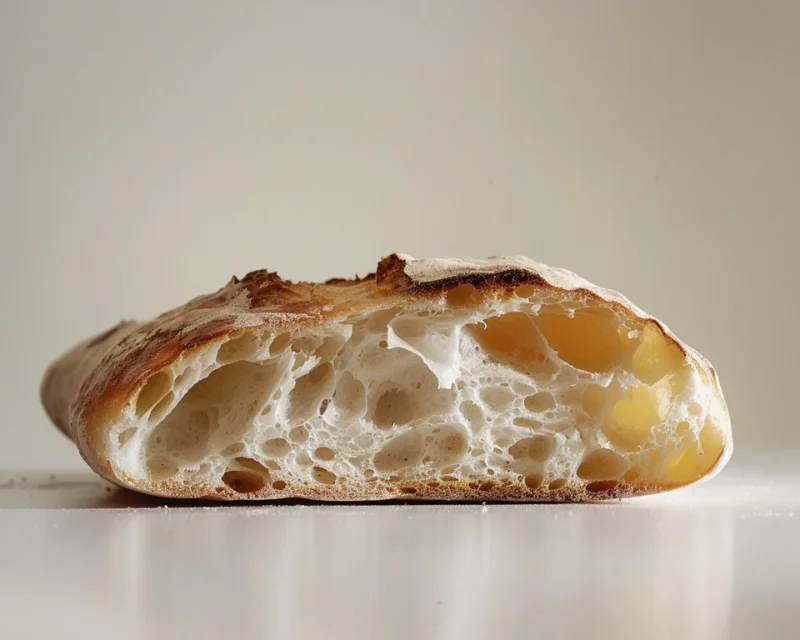
Texture: Chewy vs. Fluffy Bread
Ciabatta has a chewy bite with a crisp crust. Its open crumb creates a light yet firm texture. Focaccia, on the other hand, is soft and fluffy. The olive oil gives it a rich, tender feel, making it perfect for dipping or serving as a side.
Ingredients: The Role of Olive Oil
Both breads use flour, water, yeast, and salt. However, Focaccia has more olive oil, giving it a richer taste and softer crumb. Ciabatta has a drier dough, making it lighter and crispier. This difference in ingredients affects both flavor and texture.
Shape & Appearance: Loaf vs. Flatbread
Ciabatta has a rustic, free-form shape. Bakers stretch the dough, creating an airy, uneven loaf. Focaccia, in contrast, is a flatbread. It is spread into a pan, dimpled with fingertips, and baked until golden. This difference makes Ciabatta better for sandwiches and Focaccia great for serving as an appetizer.
Baking Methods: High Hydration vs. Pan-Baked
Ciabatta requires high hydration to create its airy texture. The dough is wet and sticky, forming large air pockets when baked. Focaccia is easier to shape and bakes in a pan. The olive oil helps develop a golden, crispy crust while keeping the inside soft.
In the Ciabatta vs. Focaccia bread debate, both have unique qualities. Ciabatta is ideal for sandwiches, while Focaccia is perfect for dipping and side dishes. Choosing the right one depends on your recipe and preference.
Choosing the Right Bread for Your Recipe
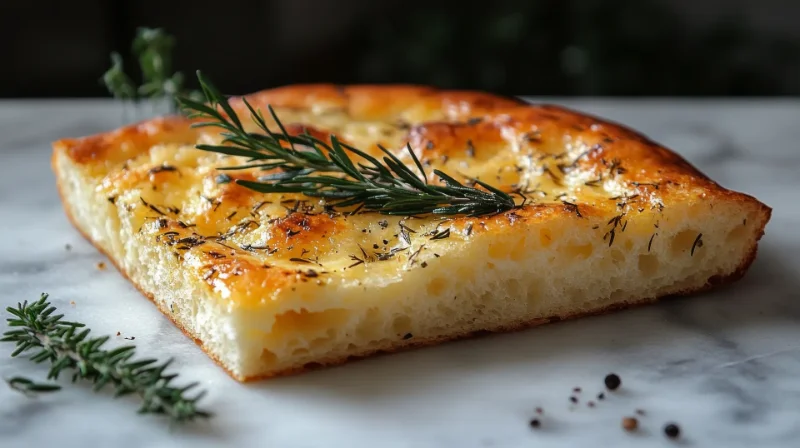
Best Bread for Sandwiches
Ciabatta vs. Focaccia bread both work well for sandwiches, but they serve different needs. Ciabatta is ideal for paninis because its chewy texture holds up under heat and pressure. Focaccia is better for cold sandwiches since its soft, olive oil-rich crumb complements delicate fillings.
Best Bread for Dipping
If you love bread for dipping, Focaccia is the better choice. It absorbs olive oil and balsamic vinegar beautifully, thanks to its airy crumb and dimpled surface. Ciabatta also works, but its crusty exterior doesn’t soak up liquids as easily as Focaccia.
Best Bread for Toasting
Ciabatta holds up better for crispy toasts. Its dense yet airy structure creates the perfect balance of crunch and chewiness. Whether making bruschetta or garlic bread, this artisan bread develops a golden, crispy crust when toasted.
Best Bread for Side Dishes
When pairing bread with soups, pasta, or salads, Focaccia is the best choice. Its soft, flavorful crumb and olive oil finish make it a perfect complement to hearty Italian meals. In a bread texture comparison, Focaccia’s fluffy bite works better than Ciabatta’s crisp crust for soaking up sauces.
When deciding between Ciabatta vs. Focaccia bread, consider how you plan to use it. Ciabatta is great for hearty sandwiches and crispy toasts, while Focaccia shines as a flavorful side or dipping bread.
Rosemary Focaccia Bread Recipe
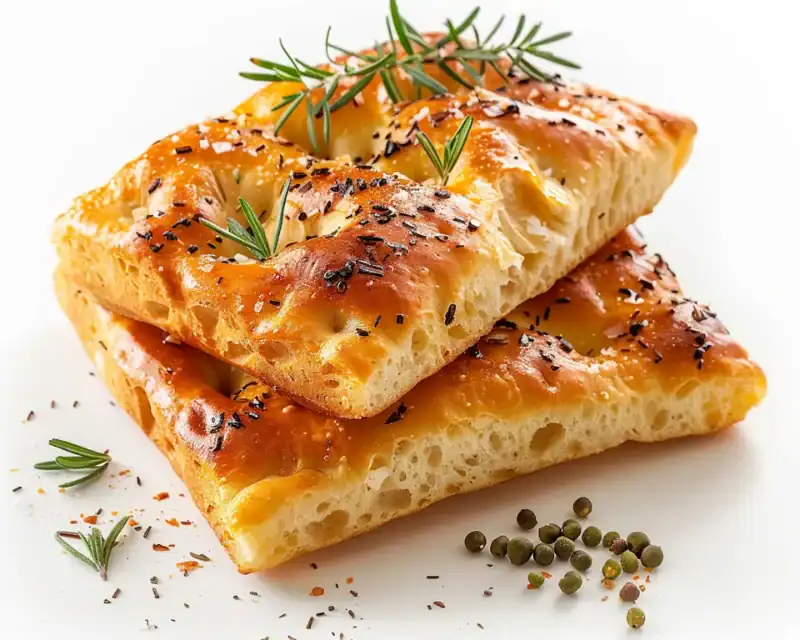
Rosemary Focaccia Bread Recipe
Ingredients
Method
- In a bowl, combine warm water, sugar, and yeast.
- Let it rest for about 5-10 minutes until frothy.
- In a large bowl, mix flour and salt.
- Add yeast mixture and 2 tablespoons olive oil.
- Stir to form a sticky dough.
- Knead dough on a floured surface for about 5-7 minutes until smooth and elastic.
- Place dough in an oiled bowl, cover, and let rise for about 1 hour, or until doubled.
- Grease a baking pan with olive oil.
- Press dough into the pan gently, forming an even layer.
- Cover and let rise another 30 minutes.
- Preheat oven to 425°F (220°C).
- Drizzle remaining 2 tablespoons olive oil over dough.
- Use fingers to press dimples across the surface.
- Sprinkle fresh rosemary leaves and coarse sea salt on top.
- Bake for 20-25 minutes until golden brown.
- Let cool slightly, slice, and serve warm.
10 Frequently Asked Questions About Ciabatta vs. Focaccia Bread
1. Which bread is better for sandwiches?
Ciabatta is ideal for grilled paninis due to its sturdy texture. Focaccia works well for cold sandwiches because of its soft and flavorful crumb.
2. Can I use Focaccia instead of Ciabatta for paninis?
Yes, but Focaccia’s soft texture may not hold up as well under heat and pressure compared to Ciabatta’s firmer crust.
3. Which bread is easier to bake at home?
Focaccia is easier to bake because it requires less hydration and shaping. Ciabatta dough is very wet and sticky, making it harder to handle.
4. Which bread is better for toasting?
Ciabatta is best for toasting because its firm structure creates a crispy, golden crust when grilled or baked.
5. Which bread is more authentic to Italian cuisine?
Both are authentic Italian breads, but Focaccia has ancient origins, while Ciabatta was created in the 1980s as an Italian alternative to French baguettes.
Final Thoughts: Which Italian Bread Should You Choose?
In the Ciabatta vs. Focaccia bread debate, both have their unique qualities. Ciabatta offers a chewy texture with a crisp crust, making it perfect for sandwiches or toasting. Focaccia, on the other hand, is soft, fluffy, and rich with olive oil, making it ideal for dipping or as a side dish.
The best choice depends on the recipe you have in mind. If you’re making a hearty panini or crispy toast, go with Ciabatta. If you’re looking for a soft, flavorful bread for dipping or a side to soup, Focaccia is the way to go.
Don’t hesitate to experiment with both artisan breads in your dishes. Try them in different contexts and see which one works best for you.
We’d love to hear from you! Share your favorite way to use Ciabatta or Focaccia in the comments below.
For more recipes, try our:
- How to Make a Layered Yogurt Parfait for a Perfect Breakfast
- Club Sandwich Variations: 5 Delicious Ways to Upgrade the Classic
- Seafood Paella with Saffron, Served with Garlic Aioli
- Biscuits and Gravy with a Twist: 5 Delicious Variations to Try
- Hearty Beef Goulash Recipe: A Perfect Meal for Cold Days

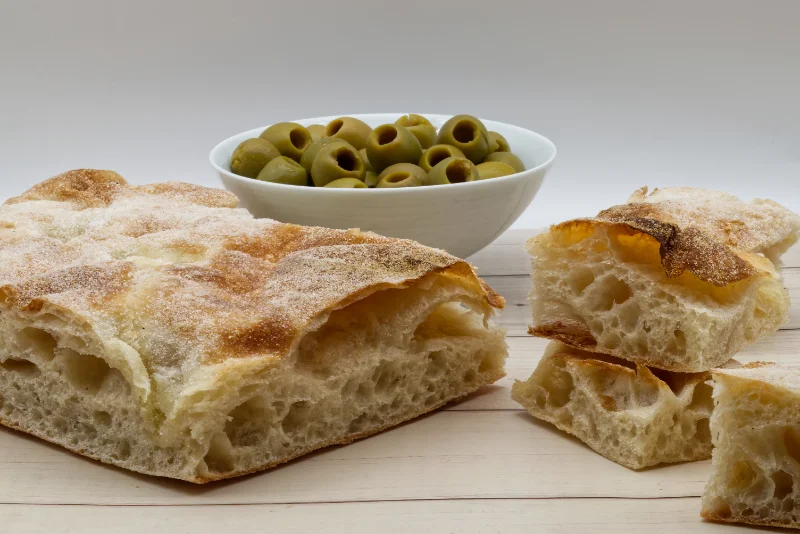
2 thoughts on “Ciabatta vs. Focaccia: Which Italian Bread Is Best for Your Recipe?”